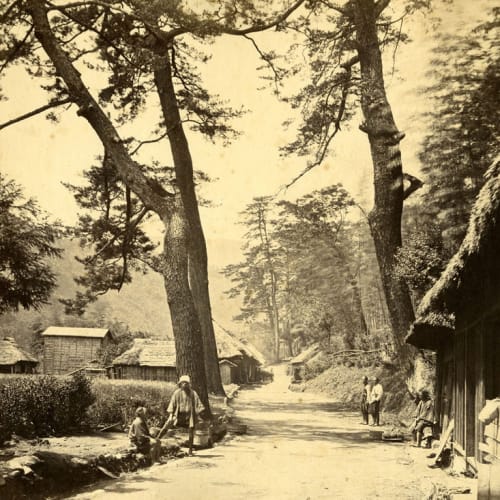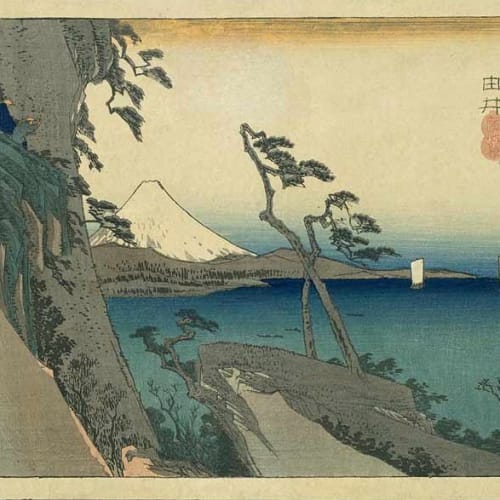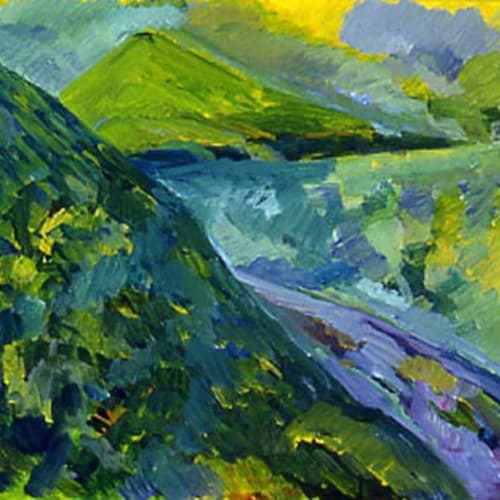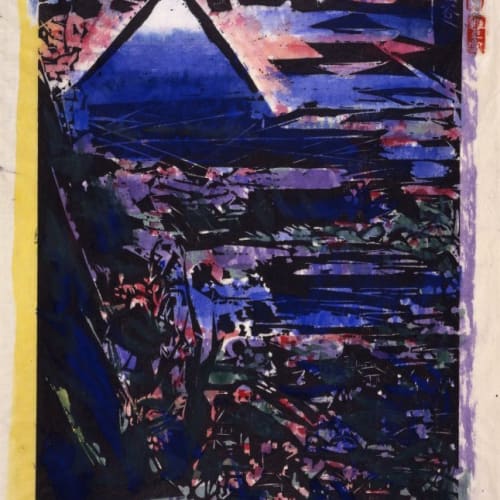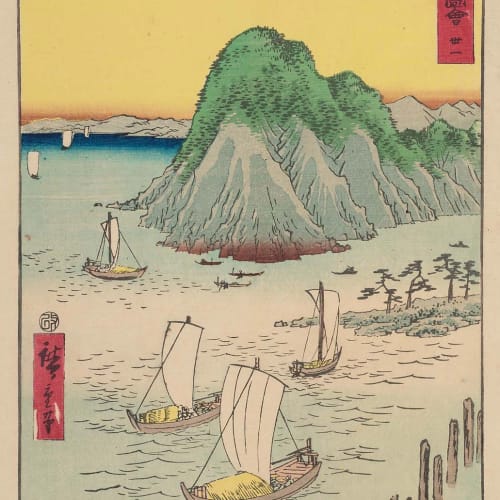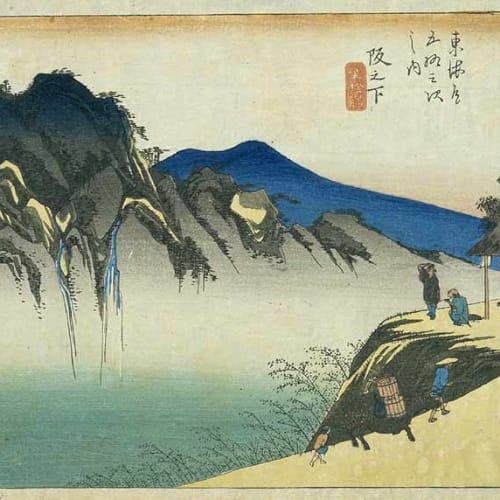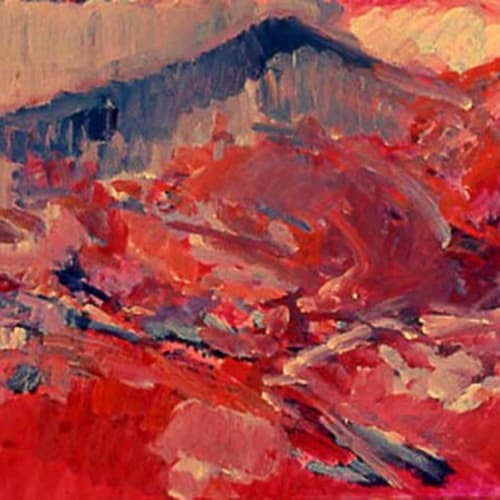uNFORTUNATELY THIS LECTURE HAS BEEN POSTPONED.
The Tokaido - Visions of the Eastern Sea Road
This lecture will chart the course of the famous highway, from Tokyo to Kyoto, weaving together various stories from over four centuries of travel. Caple will examine the history of the Tokaido, discussing aspects of the development of the road by the Tokugawa shogunate and its condition today. Famous incidents that have taken place along the route, such as at Hakone and Namamugi, will be used to illustrate the realities of the journey itself.
The lecture will also incorporate an overview of some of those artists who have left visual records of the Tokaido road and its history. From printmakers to photographers, a range of images will be presented to help the audience visualise the road’s changing geography. Particular focus will be given to Utagawa Hiroshige’s famous series The Fifty-Three Stations of the Tokaido, and also to Felice Beato’s 19th century photographs taken along the route.
The lecture concludes by considering the impact and legacy of the Tokaido, both inside and outside Japan. From film documentaries to novels and poems, Japanese and foreign artists alike have been enchanted by the long and rich history of this famous sea road.
The Tokaido Road Project:
Nigel Caple made drawings from the Tokaido Road in Japan, which culminated in a touring exhibition with paintings and lectures entitled The 53 Stations of the Tokaido Road. These lectures were presented at the British Museum, the Barbican Centre, Hertfordshire University, the Japan Society and the Daiwa Anglo-Japanese Foundation. The Tokaido lecture given for the Japan Society was subsequently published as an article in the society’s publication Proceedings. Sponsors for this project included the Daiwa Anglo-Japanese Foundation, Mitsubishi Electric, the City of London Corporation and ‘Japan Festival 2001’. The project was also supported by the generosity of Caple’s friends and family.
Personal Statement:
The Tokaido Road developed in significance over time, a time that dates back to the start of Japan’s Edo Period (1603-1868). I first became aware of the Tokaido after seeing a selection of woodblock prints by the Japanese artist Utagawa Hiroshige. I grew curious to know what remained of this route and wondered how the locations would look now. I then travelled on the Tokaido Road in Japan and produced paintings based upon similar views to those once chosen by Hiroshige in the early 1830s. Some of Hiroshige's studies of these areas were transferred into a set of woodblock prints known as The 53 Stations of the Tokaido Road.
The Tokaido (Eastern Sea Road) which linked Edo (present day Tokyo) and Kyoto, has gone through many changes in its history. However, I found a sense of poetry remaining, a poetry of time and place. Hiroshige responded to these regions as did other artists both before and after him. I chose to join in this traditional Japanese subject matter and followed Hiroshige's first set of prints (Hoeido edition) as my starting point.
In time I realised that Hiroshige's images of the Tokaido were as much about an imaginative journey as a physical one. It is, perhaps, on this level of the imagination that I feel most in empathy with many of the artists that have made this journey before me. Some locations within the modern face of the Tokaido had a desolate and abandoned atmosphere, while other places were full of travellers, noise and hospitality, which, I imagined, would have been more reminiscent of the road in Hiroshige's time.
The road was approximately three hundred miles long and was an enormous physical challenge. There were mountains to pass and many rivers to negotiate, some by boat while others needed professional porters to carry travellers from shore to shore. I was fortunate in that my journey along the road was aided by contemporary transport.
The present make up of urban Japan is masking this older route, but the road in part is still there and is cared for by many Japanese. Hiroshige used the Tokaido as a source of creativity for many years. I have just started. The way I express my experience of the Tokaido is encoded in the paintings.
Nigel Caple
2001
Extract from the exhibition catalogue The 53 Stations of the Tokaido Road paintings by Nigel Caple:
Nigel Caple was my student twenty years ago and over the intervening years has become a colleague: we have shared exhibitions, discussions and advice.
Central to my belief in the importance of art and its place in society is a conviction that a training in art enables the artist to discard any rigid and conventional concepts of space and time and enter a new and dynamic world of experience, which engages all our creative potentials.
Nigel's commitment as artist over the past twenty-five years enables him in his 'Stations of the Tokaido Road' to transcend the spacial and temporal divide which would otherwise separate him from his great predecessor and, with a true artist's sense of a shared seriousness, to join Hiroshige on his journey.
It has often been remarked that Japan and the United Kingdom are island cultures. Voyaging is a shared historical experience. Nigel, born in a small off-shore island of the UK, with sea-faring in his blood, takes for granted what Hiroshige took for granted: in a journey or a voyage we embody ourselves. It is this sense of human embodiment, whether his images are peopled or not, which gives Hiroshige his perennial appeal, and travelling the road and seeing what Hiroshige has seen before him, gives Nigel's own work his own sense of embodiment and warmth. The imagination is not a personal possession; though it may touch us from time to time, it is usually mediated by our great forerunners in the field. It is natural and appropriate that Hiroshige has inspired Nigel. Following the path of a master has always been a source of originality in east and west.
Matisse reminded the west that several of the classic artists of Japan changed names in order not to be prisoners of a reputation. This reminder was timely since the name Picasso was assuming an importance overriding his work and encouraging students to seek above all a name, which would licence anything. Nigel has not followed this fashion since his 'Stations of the Tokaido Road' is the culmination of many years of patient work both in Europe and Japan. If it gives him a reputation, which leads him to consider a change of name, so be it. He will remain for me a loyal friend and a fine artist.
Miles Richmond
June 2001
May 23rd 2024
6pm Doors Open
6:30pm Lecture Commences
Ticket - £10
(includes a complimemtary glass of wine)
